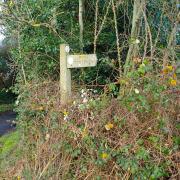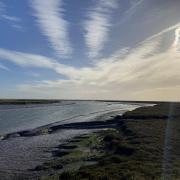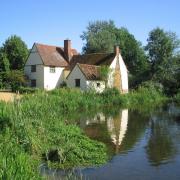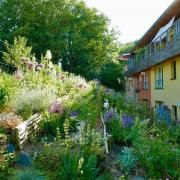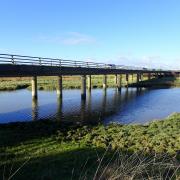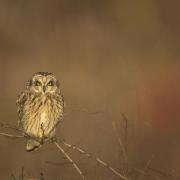Balancing the demands of low-cost, high quality food and the need to protect our rural environment is a tricky furrow to plough for our farmers, explains Jilly McNaughton
Described by Shelley as, ‘music sweet as love’, the uplifting song of the skylark is a sound synonymous with our arable landscape here in Essex, evocative of summer days, country walks and picnics.
However, skylark numbers, like other wildlife counts, have been declining in our countryside for some time now. A State of Nature report, published by British wildlife organisations earlier this year, suggested 60% of the species studied have declined over recent decades, with more than one in ten of them under threat of disappearing from our countryside altogether.
Modern farming practices are often blamed for this worrying loss of biodiversity and when you consider the enormous changes that have taken place in our countryside over the past century, it is easy to see why. But while we may be able to blame farming for some of these losses, can we really blame farmers? Farmers rose to the challenge of feeding our nation during World War II when they were asked by the government to double food production from the same amount of land. And in the decades that followed, farmers were again asked to feed the UK’s burgeoning population with ever-cheaper, out of season, foods.
It is ironic that farming, the manmade process which established some of the most diverse and treasured habitats in our landscape today (such as water meadows, wildflower pastures and ancient orchards) can also be held responsible for the damage suffered by our ecosystems in more recent years. However, it also means farmers are in a unique position to solve the problem, especially when you consider that agriculture accounts for more than 70% of land use in the UK.
Patchy progress
Fortunately, through the Campaign for the Farmed Environment, farmers are trying to do just that; building on the agri-environment schemes that have developed over the past 20 years. The campaign, which was established in 2009 and has recently been expanded to include all of lowland England, encourages farmers to implement wildlife-friendly measures voluntarily on 3 to 4% of their land, through agri-environment or for no extra payment.
You may have seen some of these measures in place on farms across the county. Indeed, on a recent walk, a friend of mine remarked that the farmer whose land we were walking on had a very ‘patchy’ wheat crop. What he was in fact looking at was a field containing intentionally created skylark plots: areas left bare in the crop to help skylarks reach their nests safely, forage and feed their young. By creating two plots per hectare of crop, it has been shown that farmers can boost skylark productivity by 50%.
To support the campaign, farmers choose from a menu of 20 options, all aimed at protecting precious soil and water resources and enhancing farm wildlife. Other examples include sowing a ‘crop’ of seed-bearing plants to help feed farmland birds through the winter, establishing an area of wildflowers on the edge of fields to support pollinators such as bees or leaving grass buffer strips alongside watercourses to ensure soil, fertilisers and pesticides don’t get washed directly into the water.
And as you walk through the rural parts of Essex, keep an eye out for what your local farmer is doing to enhance the farmed environment. If you see a patchy plot or two in the fields, remember that it might just be a farmer doing their bit to help skylarks, ensuring our summer skies remain filled with the beautiful song of this rather special little bird.








